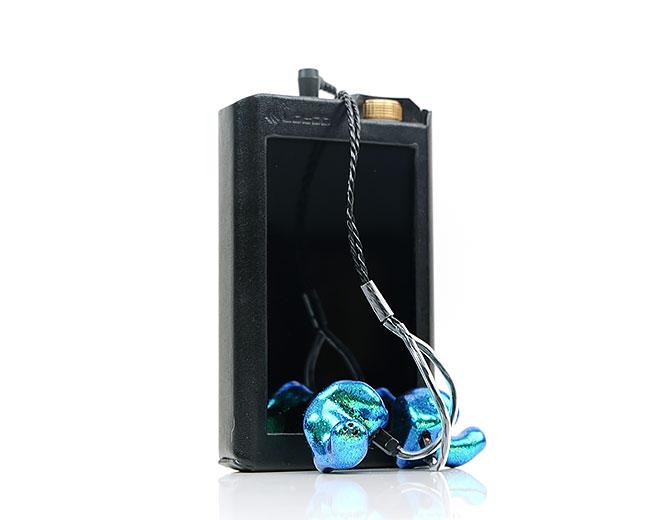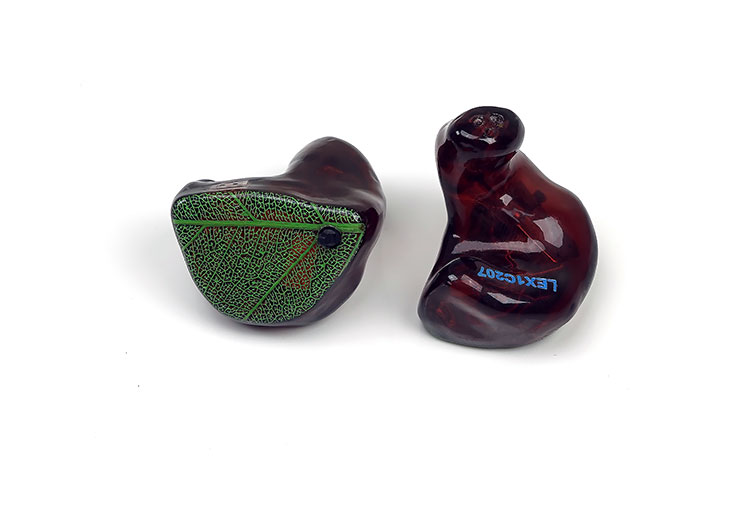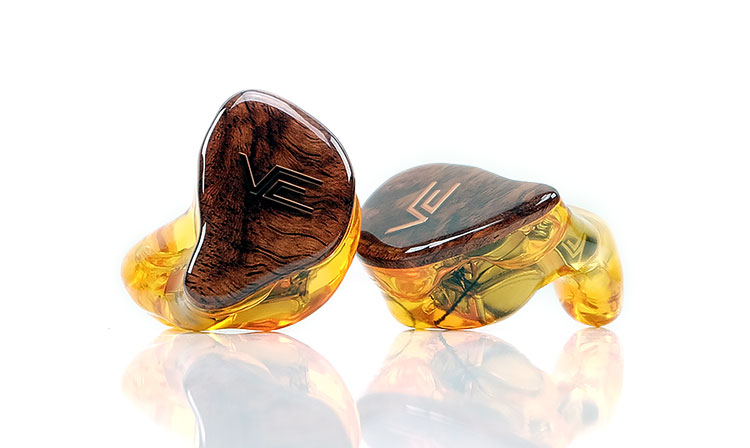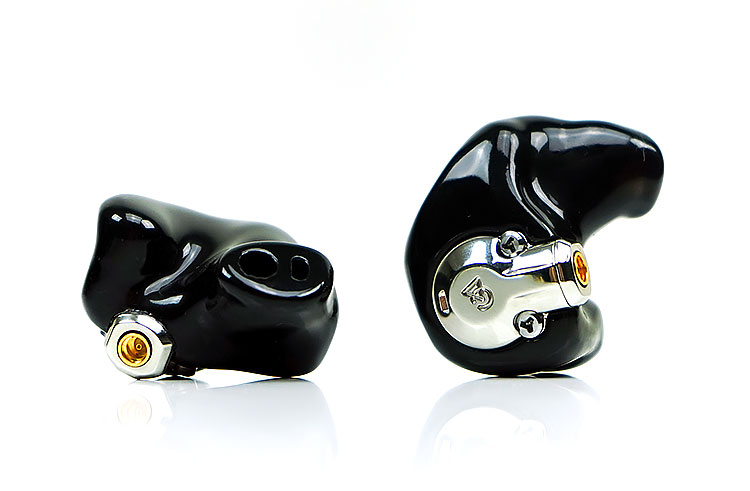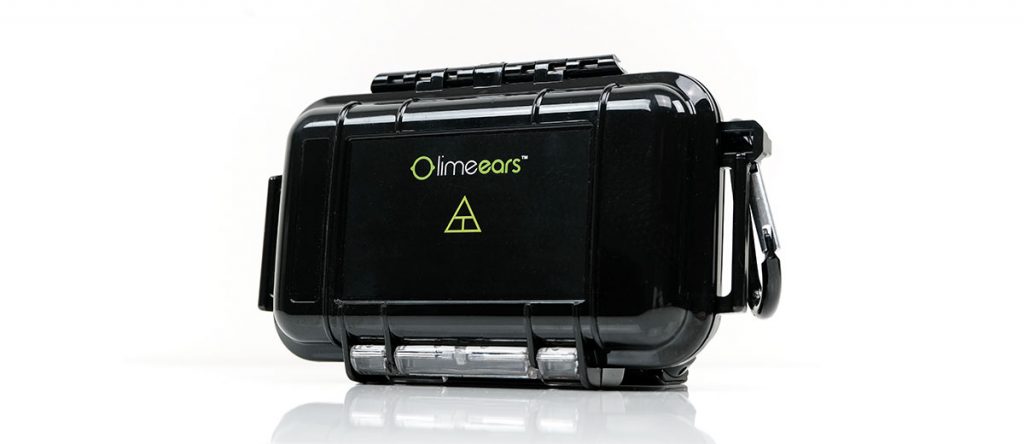Synergy
Efficiency
There is no formal rating for the Aether R which is consistent with how Lime Ears works with specs, in short, you do not get them much like Noble.
Last time with the Model X we did a broad sweep of a few IEMs with a test DAP to get a feel of where it might sit, at least in terms of SPL and we ended up guessing that it was somewhere around 16-30Ω and 105-109dB SPL.
With that in mind, we did a very rough comparison between the Model X and the Aether R using the Lotoo PAW Gold DAP which is rated at 500mW into a 32Ω in both its balanced and unbalanced outputs.
In low gain unbalanced there are absolutely no issues driving the Aether R with a comfortable listening level of 50 – 60 achievable.
The Model X, by comparison, was less efficient though not by a huge amount when the bass boost is switched off. The bass switch on that larger 8dB elevation on the Model X closed the gap considerably in terms of loudness. The Aether R doesn’t quite have as much dB elevation in its bass boost but it still sounds slightly the more efficient of the two.
I would suspect the Aether R is closer to 112dB tops compared to the 109dB limit I had guessed for the Model X. We used a known 111dB to 112 dB model, the FiiO FH7, to also compare and the SPL was almost the same for both so this is where we think it sits.
Noise
Honestly, this is a very well-behaved monitor for source-high noise floors. I could not detect any noise from our test DAPs such as the Cayin N6ii and the Lotoo PAW Gold Touch.
Higher noise floors such as the HiBy R6 Pro displayed no noticeable hiss either. Even budget DAPs such as the Sony A35 displayed a fairly black background. The SPL isn’t crazy sensitive compared to the likes of the CA Solaris and Andromeda.
Synergy
Cable
The key for me is the cable and the level of dynamic range and instrumental separation you can achieve with a suitable replacement. As mentioned in our stock cable comments, we felt it was a little compressed and overly warm sounding, not quite at the top table for resolution and clarity with a bit too much resistance.
We ended up working with a fairly cheap, (in comparison to other brands) OC Studio Orpheus MK5 for the majority of the review but we were careful to use the same cable for all of our comparison work.
This is an 8-wire 24AWG Cryo-treated UPOCC single crystal pure copper and does a nice job of opening up the soundstage of the Aether R with excellent staging depth and a bit more treble presence over the stock.
I did try the more expensive Effect Audio Leonidas II but I felt the warmer organic mids and lack of low-end weight took something away from the Aether R. I wanted something more robust and with a bit more contrast and the Orpheus MK5 sounded just right.
Source
With this combo, the Aether R blended easily with all but the muddiest of sources. Of course, I had my preferences. The Lotoo PAW Gold Touch had probably the most resolving and expansive staging out of the DAPs tested. The depth and headroom were blindingly good.
The DX220/AMP1 MKII gave me a similar neutral linear type experience to the PAW Gold with perhaps a slightly softer treble performance and a little less punch. DAPs such as the HiBy R6 Pro sounded a little compressed by comparison using the Aether R but did add a little thickness to the low-end.
The N6ii with the A01 motherboard sounded very sweet indeed and perhaps the most organic sounding of the sources we used with the Aether R. The timbre on vocals with this combo was slightly sweet to euphonic sounding which made this pairing a joy to listen to for breathy vocals.
Those who like a bit of analog thickness to their guitar chords will enjoy this pairing too.
Select Comparisons
Lime Ears Model X
€890
Technical
The Model X is the next step down from the flagship Aether R. It comes in both universal and custom format and contains 4 balanced armature drivers as opposed to the 6 inside the Aether R. Both models share a lot of recent features such as VariBore, Bass boosting and TrueSub technology.
The Model X bass boost switch also follows the Fletcher-Munson principle in terms of where the FR boosting occurs. That being said, the Aether R booting is not as strong as the Model X. I believe the Model X has an 8dB jump when switched on whereas the Aether R is closer to 3-4dB so not quite as potent, more of a subtle emphasis.
Consistent with Lime Ear’s approach to specs, the Model X does not have an impedance or SPL rating officially published. From our testing, we didn’t find a huge SPL difference.
The Aether R is the more sensitive of the two in our testing by one to two steps on our review DAP selection. However, we cannot discount the additional 2 drivers delivering a bit more of a vivid sound signature than the 4 inside the Model X.
We do not think there is much of a variance either in output impedance with both being fairly easy to drive on the likes of the Lotoo PAW Gold Touch and Cayin N6ii, (unbalanced low-gain).
Performance
I find these two monitors to be quite different. With both on their stock tuning, (without bass switches on) the Model X low-end is relatively neutral up to the upper mids compared to the warmer full-bodied signature of the Aether R.
Lower mids instrumental notes sound a touch leaner on the Model X with vocals lacking that forward and richly textured sound of the Aether R’s vocal positioning and timbre.
I do think, however, that the Model X sounds a little bit more energetic in the upper mids and lower treble, exchanging body for snap and bite. The harmonics are a little more odd-infused and harder sounding on higher pitching instrumental timbre compared to the more liquid and smoother Aether R equivalent.
Bass On
Despite their bass switch coloration upping the low-end presence, the Model X has a more profound elevation and delivers a more powerful sub-bass response. However, it sounds more v-shaped to me, and whilst the bass fundamental is strong the instrumental notes lack a little sustain and texture compared to the denser Aether R tuning.
The Aether R bass boost doesn’t fundamentally change the sound signature quite like the Model X. It simply tweaks a little more low-end presence and density combined with a slightly “bigger vocal”.
You do find vocals become a little more solid and vivid sounding with the Aether R switch whereas, on the Model X, they tend to fall back a bit more in deference to that stronger bass.
Vision Ears VE4.2
€1290
Technical
The VE4.2 is a quad-BA driver 3-way crossover custom monitor with a very similar price point to the 6-driver 4-way Aether R.
The precise configuration of the VE4.2 is 2 for the lows, one for the mids, and one for the highs. It is rated at 16Ω and 120dB and whilst we do not know the ratings for the Aether R we can confirm that the VE4.2 is much more sensitive and perhaps a little easier to drive in comparison.
Using the likes of the PAW Touch Gold and Cayin N6ii DAPs both are just fine in low gain balanced but the current gap is fairly large at around 10 digital steps between them. If there is noise the VE4.2 will be the first to pick it up with the Aether R being more resistant to any background hiss.
Performance
The VE4.2 is much more v-shaped than the Aether R. Though both have a fairly BA-type timbre to their low-end the VE4.2 is much more colored with more sub-bass weight and mid-bass warmth. It’s a slightly slower-sounding low-end but also more dense and powerful sounding.
The Aether R, by contrast, has a more balanced low end. Less power? Yes, even with bass boost flicked on it doesn’t quite have that VE4.2 power but it does allow a more open tuning in the mids to shine through.
That bass prowess comes with a marked cut just below 1k. Instruments on the VE4.2 are not only further back but lack a little body and presence when the low-end gets busy. The lower mids have a bit more presence on the Aether R and also a bit more room to breathe.
Vocals
Vocals on the VE4.2 are not as dipped as something like the IE800 but they are not quite as pronounced as the Aether R’s 1-3k bump. For a V-shaped monitor, the VE4.2 does a good job of keeping vocals relatively clean sounding, especially female vocals.
I do know Vision Ears have thrown in a little bump past 1k to achieve that so if the mids mixing is not too messy vocals have a lovely presence.
Check out Empathy Test’s Bare My Soul electro-pop mix for a good example of alto male vocals having no issues rising above the power of the VE4.2’s thundering low-end. That being said, the Aether R vocal is the more prominent and intimate of the two and the better performer if you want a more vivid vocal experience.
Treble
The treble on the VE4.2 is quite nicely tuned with just enough presence to deliver some nice contrast to the bass. The Aether R seems a bit more geared to upper treble presence but nothing too extravagant so it still sounds relatively smooth but cleaner and clearer sounding than what the VE4.2 can deliver.
Campfire Audio Equinox
$1499
Technical
The Equinox is a single A.D.L.C, (Amorphous Diamond-Like Carbon), 10mm Dynamic Driver custom monitor. Not many monitors at this level use a single dynamic driver so the Equinox is unique in that respect.
Multi-driver custom monitors such as the Aether R are more the norm the higher the price point with the $215 Lear Skyline custom the only other one I have tested with a single dynamic driver. Safe to say that Equinox’s performance is much better than the Skyline’s.
The Equinox is rated at 19Ω and 105dB SPL which is not unusual for a large dynamic driver in terms of efficiency. The Aether R is surprisingly close in terms of overall efficiency so that would place it around 105-108dB max in terms of SPL.
Design
The design approach on these two monitors is also quite different. The Aether R options are much more diverse in terms of colors and plates than the black-only Equinox. CA has kept a rather interesting stainless-steel core housing that makes Equinox stand out from the crowd.
Also, the nozzle length is super short on the Equinox with virtually no depth insertion compared to the more pressure-inducing seal of the Aether R. The Equinox is very comfortable but the seal is not as good as the Aether R.
Much of that is due to the need to vent that larger dynamic driver rather than a poor fit. The Equinox is the more comfortable of the two but would never stand up to the rigors of moving around on a stage.
Performance
No question that Equinox has the more powerful low-end with plenty of dynamic driver sub-bass extension and power. The Aether R does not show off quite the same sub-bass weight though it does sound relatively dense and warm through its mid-bass with the bass switch on.
Lower mids differ markedly though with the Aether R benefitting from less bass weight, especially with the bass switch off. It has a more open sound and sounds less recessed compared to the more marked dip in the Equinox lower mids.
If you want to play some hard rock and need that guitar presence to shine through the Aether R does a better job of allowing them to breathe with better separation also.
The Equinox tends to push instrumental presence back a bit further. You do get some excellent bass fundamentals for rhythm guitar work but not quite the air and openness the Aether R can deliver.
Guitar solos that straddle pitching further up on the Equinox FR sound much further forward with some excellent clarity but tend to sound quite center-focused. The Aether R’s mids are a little more spacious with more staging width so that the same guitar solo tends to image a bit better than the Equinox.
The Equinox has a bit more treble elevation, especially when transitioning out of the mids into the lower treble whereas the Aether R is more muted sounding with that 4-5k dip.
You get a bit more of an odd-harmonic overtone and some higher contrast with its powerful low-end whereas the Aether R goes for something a bit wetter, smoother, and full-bodied.
Preferences
It is pretty clear to me that the Equinox is a more robust and suited pairing for modern synth-wave, EDM, or anything that doesn’t mix at a complex level for mid-presence.
The Equinox is a step up on the Atlas for mids and does some excellent work on female vocals but that just hammers home how suited they are to that ethereal airy vocal you tend to get on trance and synth stuff.
The Aether R is much more suited to rock, classic midrange vocal pitching, and anything that needs the mids to push forward a bit more.
Our Verdict
I can understand now why the Aether was so widely acclaimed and loved by many an audiophile. Granted I have yet to hear the original but that sweet timbre, musical but nicely balanced sound signature, and excellent vocal performance can be addictive at times.
The Aether is a joy to pair with almost every source I have save for the muddiest budget DAPs and that’s not the Aether R’s fault either.
The only weakness is that stock cable. It delivers a bit too much resistance and compression for my liking. I would factor in an additional $100-250 to get yourself a decent higher gauge wire and listen to the Aether R truly open up as a result. It’s a marvelous experience hearing the Aether R at its full potential.
Who should buy the Aether R? Music lovers in short. Yeah, I know that might sound a bit of a glib answer but this is not something for those who like their sound on the cooler cleaner sound or for neutral referencing.
It is tuned to allow you to sit back, relax, and simply enjoy whatever it is you are listening to. Is that not what this hobby should be all about in the end?
Lime Ears Aether R Specifications
- 6 precision balanced armature drivers
- 4-way passive crossover design
- Four balanced armature drivers for low-frequency production
- 1 balanced armature driver for midrange frequency production
- 1 balanced armature driver for high-frequency production





